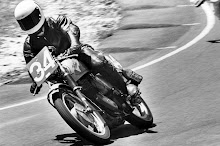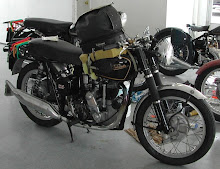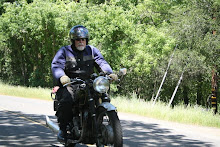Made in France, with a bevelled glass which tends to date it in the mid 1920s I was unsuccessful years back in finding the company that made it...
I had a series of books, printed about 1938 on aeronautical engineering which had an article on the rotoscope and eventually I got around to reading it...there were about 7 volumes in the set... and there was a photo of the rotoscope, another version on the stroborama I had in use....
I sold the books to the owner of the Dragon and Comper along with the stroborama, so they went to a good home and Roy Fox was thrilled to get them.
An interesting aside is I would often have master tachometer testers calibrated to do with my former instrument business and while the firm who did this work for me couldn't cope with a mechanical device such as this, they suggested another laboratory who, on my telephone call declared there was no such thing as a mechanical stroboscope, they were electronic....
A stroboscope, also known as a strobe, is an instrument used to make a cyclically moving object appear to be slow-moving, or stationary.
So lets look at my stroborama stroboscope.....
It uses a slot, the width of which can be adjusted, through which your eye observes the target object and the slot is rotated by hand motion geared and which has a smooth action....
The rotating target object can be slowed down and its motion completely stopped...as there is a calibrated scale, then the rotational speed of the target in rpm can be ascertained.
In the case of the rotoscope in the illustrations, the tachometer in the cabin of the aircraft can be compared to the actual speed of the propellor observed via the rotoscope/stroborama.
Illustrated below is the zenon tubed version I still have.... the neon tubed version was sold on....



























